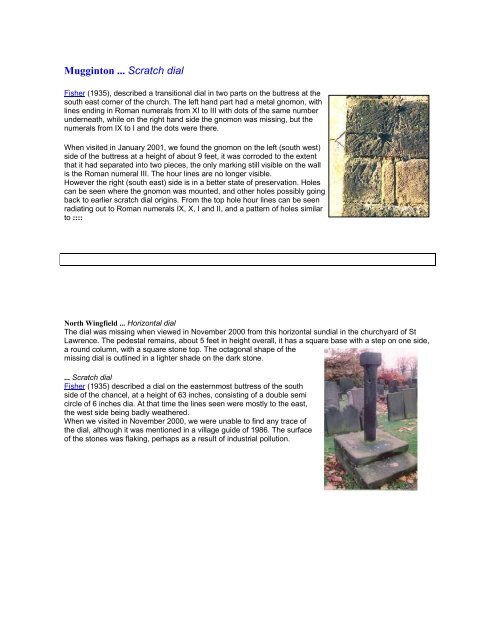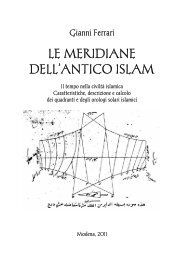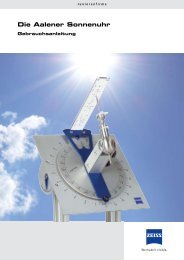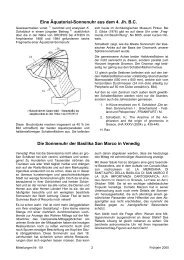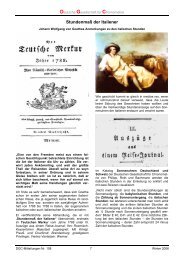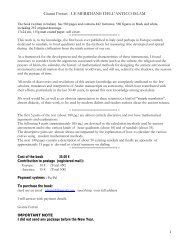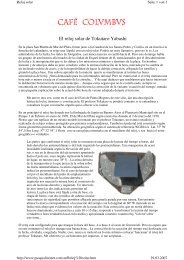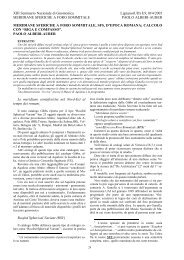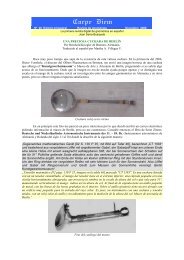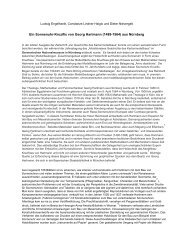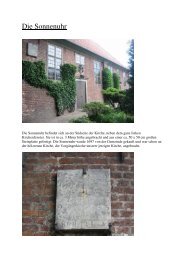International Gnomonic Bulletin - Gnomonica by Nicola Severino
International Gnomonic Bulletin - Gnomonica by Nicola Severino
International Gnomonic Bulletin - Gnomonica by Nicola Severino
Create successful ePaper yourself
Turn your PDF publications into a flip-book with our unique Google optimized e-Paper software.
Mugginton ... Scratch dial<br />
Fisher (1935), described a transitional dial in two parts on the buttress at the<br />
south east corner of the church. The left hand part had a metal gnomon, with<br />
lines ending in Roman numerals from XI to III with dots of the same number<br />
underneath, while on the right hand side the gnomon was missing, but the<br />
numerals from IX to I and the dots were there.<br />
When visited in January 2001, we found the gnomon on the left (south west)<br />
side of the buttress at a height of about 9 feet, it was corroded to the extent<br />
that it had separated into two pieces, the only marking still visible on the wall<br />
is the Roman numeral III. The hour lines are no longer visible.<br />
However the right (south east) side is in a better state of preservation. Holes<br />
can be seen where the gnomon was mounted, and other holes possibly going<br />
back to earlier scratch dial origins. From the top hole hour lines can be seen<br />
radiating out to Roman numerals IX, X, I and II, and a pattern of holes similar<br />
to ::::<br />
North Wingfield ... Horizontal dial<br />
The dial was missing when viewed in November 2000 from this horizontal sundial in the churchyard of St<br />
Lawrence. The pedestal remains, about 5 feet in height overall, it has a square base with a step on one side,<br />
a round column, with a square stone top. The octagonal shape of the<br />
missing dial is outlined in a lighter shade on the dark stone.<br />
... Scratch dial<br />
Fisher (1935) described a dial on the easternmost buttress of the south<br />
side of the chancel, at a height of 63 inches, consisting of a double semi<br />
circle of 6 inches dia. At that time the lines seen were mostly to the east,<br />
the west side being badly weathered.<br />
When we visited in November 2000, we were unable to find any trace of<br />
the dial, although it was mentioned in a village guide of 1986. The surface<br />
of the stones was flaking, perhaps as a result of industrial pollution.


